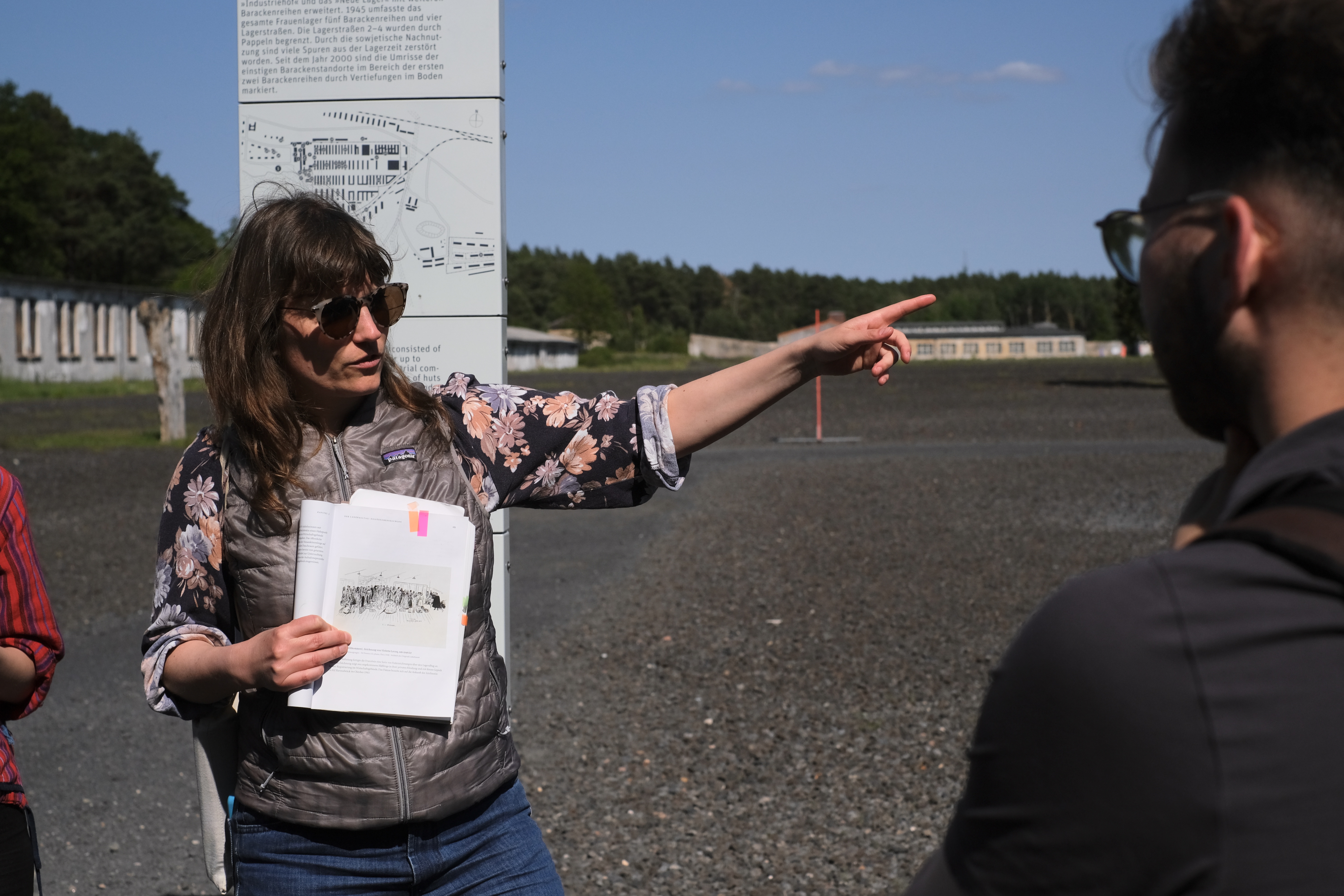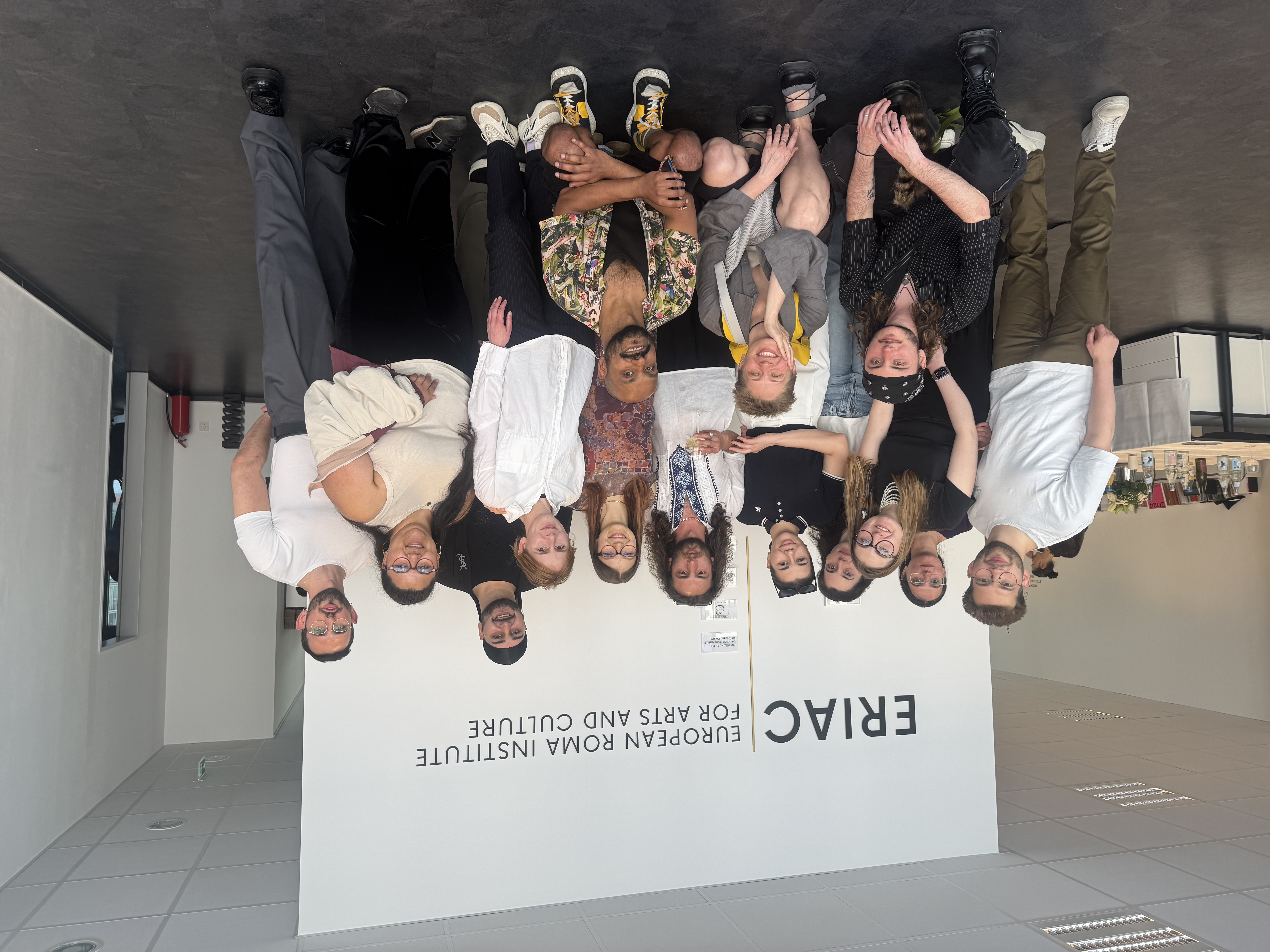Remembering Together: International Summer School on Roma History in Berlin
From June 10 to 15, the Youth Agency for Roma Culture Advocacy (ARCA) in cooperation with the Society for Threatened Peoples hosted the international Summer School on Roma History, “Remembering Together” in Berlin .The project was funded by the EVZ Foundation and the Federal Foreign Office as part of the program YOUNG PEOPLE remember international.
Bringing together 12 participants from across Europe and Ukraine, the program offered a unique opportunity to study and reflect on the tragic history of Roma and Sinti in the 20th century, with a particular focus on the genocide during the Second World War. Through lectures by leading scholars, documentary screenings, discussions, and the study of personal diaries, participants deepened their understanding of this neglected chapter of European history and its enduring significance today.
Bearing witness at Ravensbrück
A central moment of the summer school was the visit and guided tour at the former Ravensbrück concentration camp. Many Roma women and children were imprisoned there, and most did not survive, dying from hunger, illness, or in the gas chambers.
Ravensbrück was the largest concentration camp for women in the German Reich. The inmates came from over 30 countries. The greatest numbers came from Poland (36%), the Soviet Union (21%), the German Reich (18%, including Austria), Hungary (8%), France (6%), Czechoslovakia (3%), the Benelux countries (2%), and Yugoslavia (2%).
SS authorities interned a wide range of prisoners, including political prisoners, so-called “asocials” (a category under which many Roma were imprisoned), Jews, Jehovah’s Witnesses, so-called “criminals,” “work-shy,” and “race defilers.” Periodically, the SS conducted brutal “selections” of those considered too weak or unfit for work. Initially, “selected” prisoners were executed by shooting.
Beginning in 1942, under Operation 14f13, prisoners were transferred to the Bernburg sanitarium, which had been equipped with gas chambers as part of the Nazi “Euthanasia” program. There, around 1,600 women and 300 men from Ravensbrück were murdered. Approximately half were Jewish, at least 25 were Roma, and at least 13 were Jehovah’s Witnesses.
Among the victims and survivors was Ceija Stojka, a young Lovara Romni from Austria, who endured Auschwitz, Ravensbrück, and Bergen-Belsen, later becoming an important voice through her art and writing. The camp also held many Ukrainian women, including Olha Froliak Eliashevska, Lidia Ukarma Marciuk, Ivanna Hryhortsiw Holovata, and Vira Franko, granddaughter of the writer Ivan Franko. Their stories reveal the multinational character of Ravensbrück and highlight the particular vulnerability of Roma and other persecuted minorities.
Voices of the participants
For many, the experience was transformative.
“It was a unique experience that had a huge impact on me. On one hand I learned a lot about the history and culture of the minority. On the other hand I met so many amazing people,” shared one participant.
Another emphasized the program’s power to create dialogue across backgrounds:
“The summer school provided a space for people from different backgrounds to engage in meaningful exchange. It helped me to reflect on my own privileges as a white academic. Opportunities like these help allies to understand their agency, but also their boundaries regarding Roma topics.”
A third participant highlighted the importance of solidarity:
“Firstly, I’d like to express my gratitude for such an opportunity! Coming together, learning about untold histories, sharing different perspectives not only in a formal setting makes this gathering very special on a personal level. In times like these we need to build alliances, find commonalities, and co-listen — and this happened during the school.”
Connecting memory and contemporary culture
The program also included visits to the European Roma Institute for Arts and Culture (ERIAC) during the opening of the Berlin Biennale 2025. The collaboration between the Biennale and ERIAC stems from a shared dedication to artistic practices that challenge erasure and amplify the voices of those historically pushed to the margins.
Curators Zasha Colah and Timea Junghaus brought together intersecting perspectives that explore resilience not as a passive state, but as a transformative force—an insistence on survival through creativity, restoration, and reimagining. The exhibition unfolds as a dialogue between histories of endurance and contemporary gestures of repair, forging new solidarities across artistic, ecological, and social landscapes.
More than history
For organizers, the summer school was designed as more than a scholarly initiative. “This was not only a school about history, but also a space for reflection, empathy, and dialogue,” they emphasized.
By combining academic learning, cultural engagement, and personal encounters, “Remembering Together” marked an important step toward building an international platform for young researchers, artists, and activists. It opened new perspectives on Roma remembrance culture in Europe while reinforcing a collective commitment to memory, dignity, and responsibility.
See also
- Open Call for Participants: Summer School on Roma History "Remembering Together"
- Public event "Roma in Ukraine – Fighters for Democracy, Human Rights and Justice"
- The Time to Remember project is an educational and memorial program for young people
- Second part of the educational project "At the Crossroads of History"
- Training “Roma Media School ‘Djanes’
- Training called “Roma Youth for Equal Rights”


